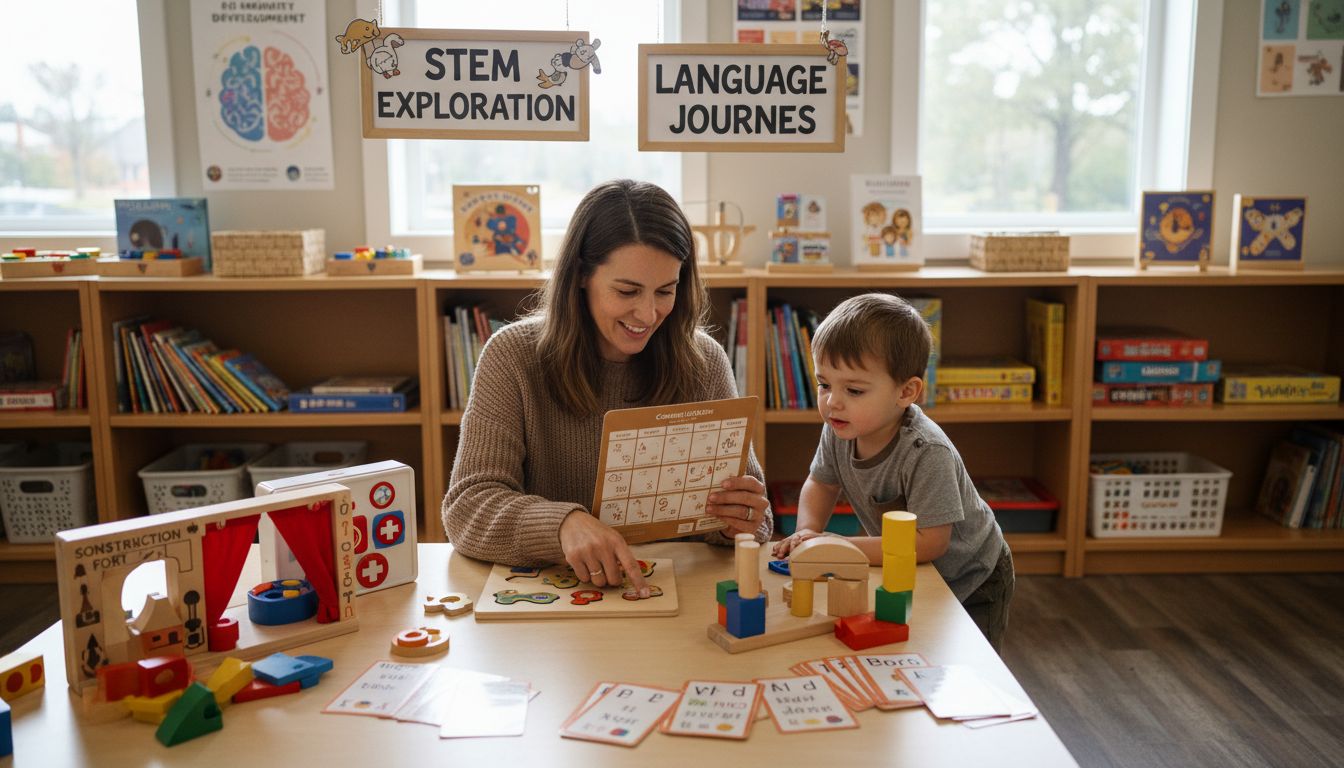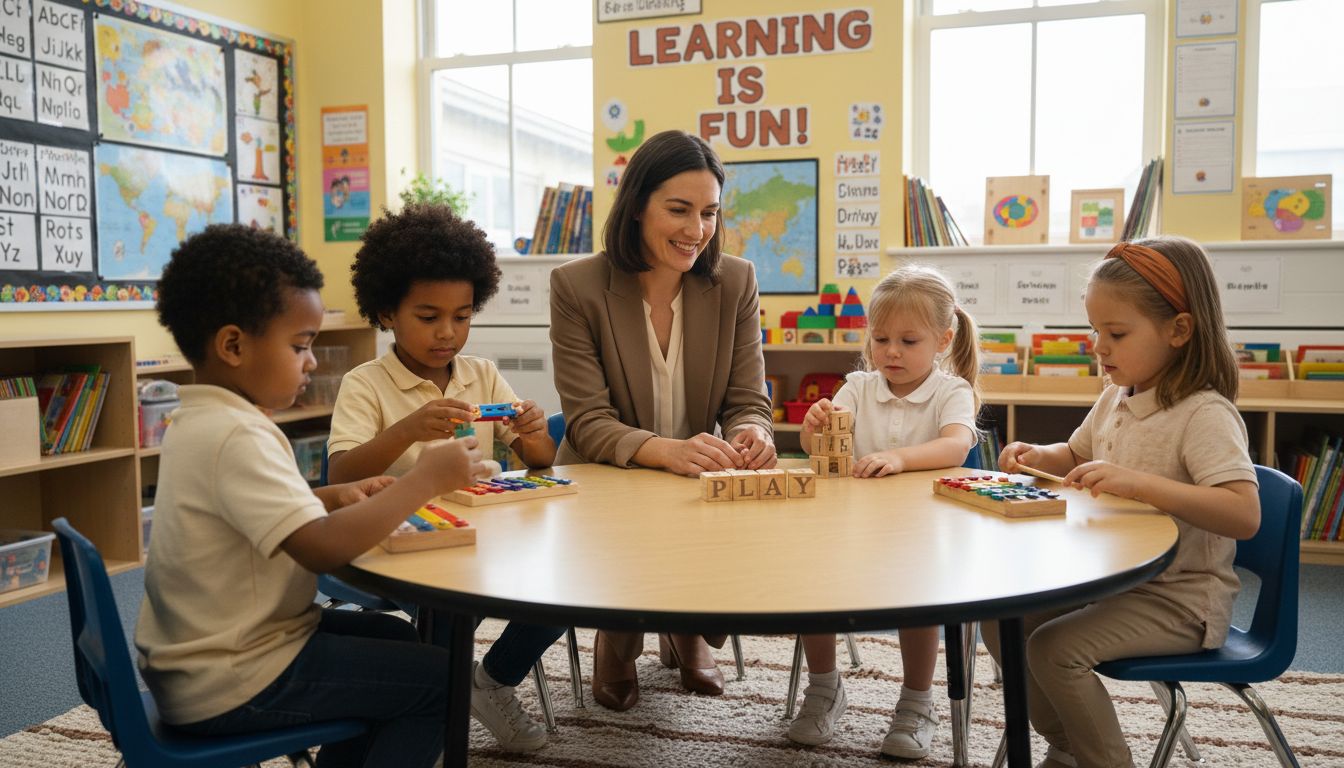Did you know that children who regularly use educational toys show up to 32 percent higher cognitive development scores compared to those who do not? Parents and educators everywhere are searching for ways to make learning both fun and meaningful for kids. Understanding educational toys helps families and teachers choose tools that turn playtime into real growth, offering children hands-on opportunities to build skills and confidence while exploring new ideas.
Table of Contents
- Defining Educational Toys And Their Purpose
- Major Types Of Educational Toys Explained
- How Educational Toys Support Child Development
- Choosing Quality Educational Toys For Children
- Common Mistakes When Selecting Learning Toys
Key Takeaways
| Point | Details |
|---|---|
| Purpose of Educational Toys | Educational toys are designed to enhance children’s cognitive, emotional, and physical development through engaging play experiences. |
| Characteristics of Effective Toys | Quality educational toys should be age-appropriate, encourage skill building, promote open-ended play, and engage children’s interests. |
| Common Selection Mistakes | Prioritizing complexity over engagement and ignoring developmental stages can hinder effective learning; toy selection should focus on balance and alignment with children’s needs. |
| Variety of Educational Toys | Different types of educational toys, from STEM to role-playing sets, cater to various aspects of development and facilitate holistic learning experiences. |
Defining Educational Toys and Their Purpose
Educational toys represent far more than simple playthings - they are carefully crafted learning instruments designed to transform childhood development through engaging, interactive experiences. Learn more about their significance in our guide on why educational toys matter.
According to research, educational toys are strategically designed tools that simplify complex adult activities into child-friendly formats, making learning both accessible and enjoyable. These toys go beyond traditional entertainment by encouraging children to develop specific cognitive skills, critical thinking abilities, and foundational understanding across various subject areas. They act as bridges between play and meaningful learning, helping children explore, experiment, and expand their knowledge through hands-on interaction.
Key characteristics of educational toys include:
- Intentional design focused on specific developmental skills
- Age-appropriate challenges that stimulate cognitive growth
- Interactive elements that promote problem-solving
- Opportunities for creative exploration and imaginative play
- Materials that engage multiple senses simultaneously
The fundamental purpose of educational toys extends far beyond mere amusement. They serve as powerful developmental tools that support children’s intellectual, emotional, and physical growth. By transforming abstract concepts into tangible, playful experiences, these toys help young learners build confidence, curiosity, and a genuine love for discovering new ideas. Whether it’s a puzzle that teaches spatial reasoning or a building set that introduces basic engineering principles, educational toys make learning feel like an exciting adventure rather than a tedious task.
Major Types of Educational Toys Explained
Educational toys represent a diverse landscape of learning experiences, each designed to support different aspects of childhood development. Discover more about the fascinating world of educational toys in our comprehensive guide, which explores the rich variety of learning tools available to parents and educators.
According to research, educational toys span several critical categories that target specific developmental skills. These categories include building and construction toys, puzzles and matching games, arts and crafts materials, musical instruments, and role-playing sets. Each type offers unique opportunities for children to engage with complex concepts through hands-on learning. For instance, construction toys help develop spatial reasoning and engineering thinking, while puzzles enhance problem-solving and cognitive flexibility.
Key types of educational toys include:
Here’s a comparative overview of major types of educational toys and their developmental benefits:
| Toy Type | Main Skills Developed | Key Features |
|---|---|---|
| STEM Learning Toys | Mathematics Scientific thinking |
Hands-on experimentation Problem-solving |
| Literacy Building Sets | Language Communication skills |
Letter recognition Storytelling |
| Creative Arts Kits | Imagination Fine motor skills |
Drawing Craft construction |
| Musical Instruments | Auditory processing Rhythmic skills |
Sound exploration Sensory engagement |
| Role-Playing Toys | Social-emotional development Empathy |
Imaginative scenarios Cooperation |
- STEM Learning Toys: Support mathematical and scientific thinking
- Literacy Building Sets: Encourage language development and communication skills
- Creative Arts Kits: Promote imagination and fine motor skill development
- Musical Instruments: Develop auditory processing and rhythmic understanding
- Role-Playing Toys: Enhance social-emotional learning and empathy
Research indicates that these educational toys are available across diverse subject areas, offering targeted learning experiences in mathematics, literacy, scientific exploration, and social-emotional development. By providing age-appropriate challenges and interactive experiences, these toys transform learning from a potentially intimidating process into an exciting journey of discovery. Whether a child is stacking blocks, solving a puzzle, or engaging in imaginative play, each toy serves as a sophisticated learning tool designed to nurture curiosity and support comprehensive childhood development.
How Educational Toys Support Child Development
Child development is a complex journey of growth, and educational toys play a crucial role in nurturing cognitive, social, and emotional skills. Discover the comprehensive benefits of learning toys in our in-depth guide, which explores how intentional play can transform childhood learning experiences.
According to research, educational toys are powerful tools that stimulate neural pathways and promote critical thinking. They encourage children to engage in problem-solving activities, develop communication skills, and refine both fine and gross motor skills through interactive play. By providing age-appropriate challenges, these toys help children explore complex concepts in a safe, engaging environment, turning learning into an exciting adventure of discovery.
Key developmental benefits of educational toys include:
- Cognitive Skill Enhancement: Stimulating brain development and logical thinking
- Language Development: Encouraging communication and vocabulary expansion
- Social Interaction: Promoting teamwork and emotional intelligence
- Motor Skill Refinement: Improving physical coordination and dexterity
- Emotional Growth: Building confidence and self-understanding
Research indicates that these toys are carefully designed to support different stages of childhood development. From puzzles that challenge problem-solving abilities to role-play sets that enhance social skills, educational toys offer a holistic approach to learning. They transform abstract concepts into tangible experiences, allowing children to explore, experiment, and grow in a supportive, playful environment. By making learning enjoyable and interactive, these toys become essential tools in nurturing well-rounded, curious, and confident young learners.
Choosing Quality Educational Toys for Children
Selecting the right educational toys is a nuanced process that requires careful consideration of a child’s developmental stage and learning potential. Discover expert insights on choosing the perfect educational toys that will genuinely support your child’s growth and curiosity.
According to research, quality educational toys should be strategically selected to align with specific developmental milestones and provide age-appropriate challenges. These toys are not just playthings, but sophisticated learning tools designed to build essential skills such as problem-solving, coordination, language development, numerical understanding, and creative thinking. The key is to choose toys that engage children through hands-on play, transforming learning into an exciting and interactive experience.
Critical factors to consider when selecting educational toys include:
- Age Appropriateness: Matches the child’s current developmental stage
- Skill Building: Targets specific cognitive or physical abilities
- Open-Ended Play: Encourages creativity and imagination
- Safety: Constructed from non-toxic, durable materials
- Engagement Level: Maintains child’s interest and curiosity
Parents and caregivers should approach toy selection as an intentional process of supporting childhood development. By choosing toys that challenge and inspire, you create opportunities for children to explore, experiment, and grow. The most effective educational toys are those that seamlessly blend fun with learning, making developmental milestones feel like an exciting adventure rather than a structured task. Remember, the right toy can spark a lifelong love of learning and discovery.

Common Mistakes When Selecting Learning Toys
Choosing educational toys is an art that requires careful consideration and insight. Explore our guide to avoiding common toy selection pitfalls to ensure you’re supporting your child’s developmental journey effectively.
According to research, the most critical mistake parents make is selecting toys that do not align with their child’s developmental stage. This misalignment can lead to frustration, disinterest, and missed learning opportunities. Toys that are too advanced can overwhelm children, while those that are too simple fail to challenge and engage their growing cognitive abilities. The key is to understand your child’s current developmental milestones and choose toys that provide just the right level of challenge and interaction.
Common mistakes to avoid when selecting learning toys include:
- Age Mismatch: Choosing toys inappropriate for the child’s developmental stage
- Lack of Engagement: Selecting toys that fail to maintain a child’s interest
- Limited Learning Potential: Picking toys with minimal educational value
- Ignoring Individual Interests: Overlooking the child’s unique preferences and curiosities
- Prioritizing Complexity over Fun: Selecting overly complex toys that diminish play enjoyment
Successful toy selection requires a balance between educational value and pure enjoyment. Parents should observe their children’s natural interests, pay attention to their developmental progress, and choose toys that spark curiosity and excitement. Remember, the most effective learning toys are those that feel like pure play to a child while subtly building essential skills and knowledge.
Find the Perfect Educational Toys to Spark Your Child’s Growth
Choosing the right educational toys can be a challenge. This guide reveals the importance of selecting age-appropriate toys that develop cognitive skills, creativity, and emotional growth. If you worry about picking toys that truly engage and benefit your child, you are not alone. Many parents strive to provide play experiences that nurture curiosity while avoiding frustration or boredom.

At Learning Bugs we specialise in carefully curated educational toys that balance fun with learning. Our collection features timeless wooden toys, role play sets and creative kits designed to boost development and encourage active exploration. Explore our learning toys selection to discover high-quality options that respect your child’s unique interests and milestones. Make playtime a powerful stepping stone toward confident and joyful learning today by visiting Learning Bugs.
Frequently Asked Questions
What are educational toys?
Educational toys are specially designed playthings that promote learning while engaging children in fun activities. They facilitate the development of cognitive skills, critical thinking, and foundational knowledge across various subjects.
How do educational toys support child development?
Educational toys nurture cognitive, social, and emotional skills by encouraging problem-solving, communication, and motor skills through interactive play. They transform learning into an engaging experience, allowing children to explore complex concepts safely.
What types of skills do different educational toys develop?
Different educational toys target various skills, such as STEM learning toys for scientific thinking, literacy building sets for language development, and musical instruments for auditory processing. Each type supports specific aspects of childhood growth.
How can parents choose the right educational toys for their children?
Parents should select educational toys that are age-appropriate, promote skill-building, encourage open-ended play, ensure safety, and maintain the child’s engagement and curiosity to support effective learning experiences.

0 comments